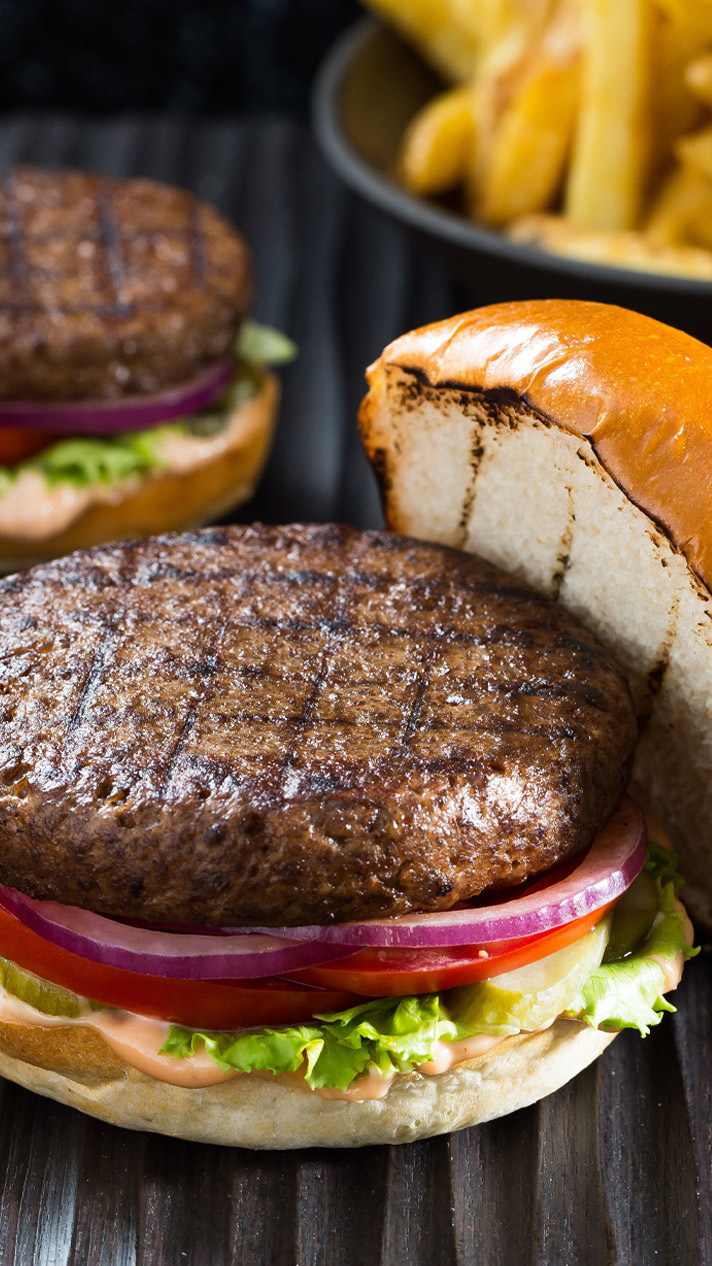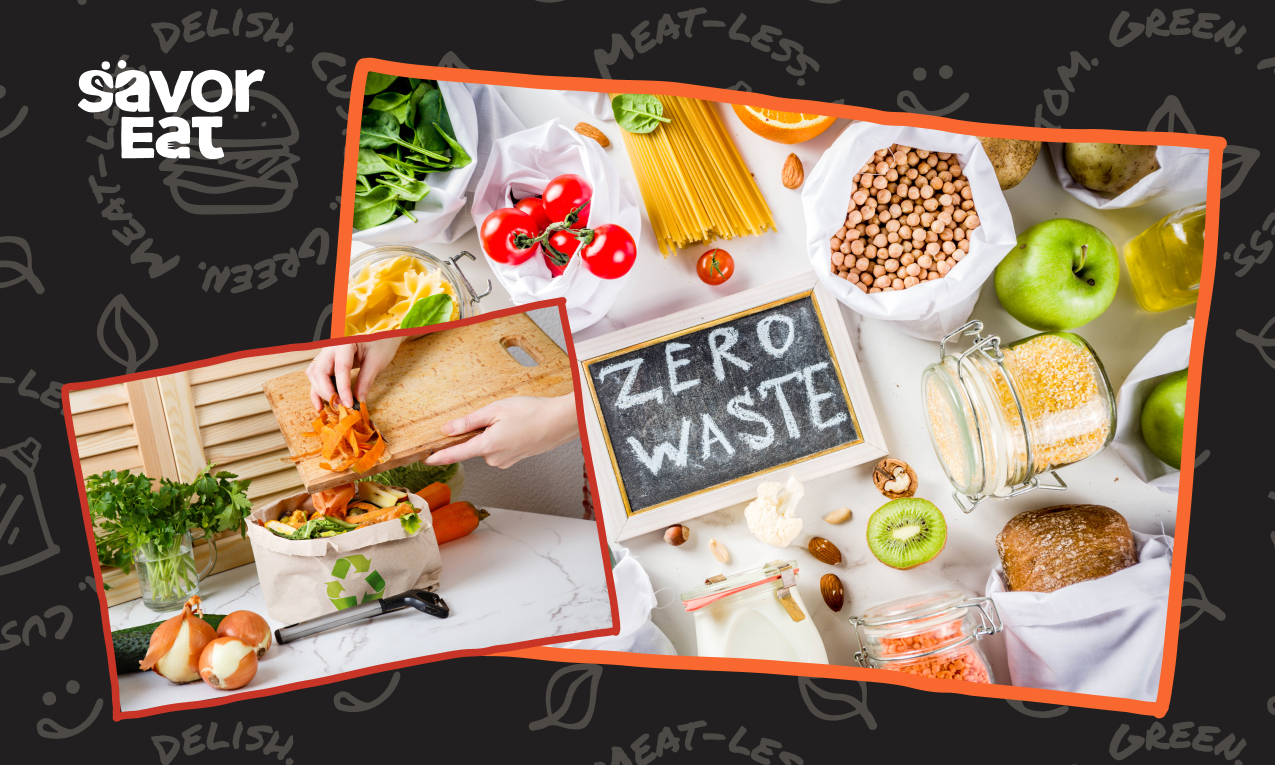Universal food waste is a global problem that affects many. According to estimates, about one-third of the world’s food is either lost or wasted from production to consumption.
Food waste is quickly becoming a massive burden for the restaurant industry with constantly increasing food costs amidst supply shortages. Additionally, getting rid of so much waste involves tremendous environmental, social, and financial strain.
Add in the increasing demand from consumers for sustainable practices, and there’s a lot of pressure on restaurateurs and food service operators to reduce food waste.
In this guide, we’ll take a closer look at the problem of food waste in restaurants to find ways to track, handle, and ultimately reduce food waste.

Food Waste in Restaurants
Restaurants in the United States generate 22 to 33 billion pounds of food waste each year. While some of this number comprises unfinished meals and customer leftovers, a large part can be attributed to factors under the restaurateur’s responsibility. With increasing food and supplier expenses, it’s one problem the industry must take measures to rectify.
But before you can make any corrections, it is crucial to understand what is causing all of this food waste in restaurants.
What Are the Causes of Food Waste in Restaurants?
According to one study, restaurants and retailers from higher-income nations are bigger food waste contributors. Here are some reasons why this is:
Food Spillage and Errors
Food spillage is a massive contributor to food waste in restaurants. With so much activity in the kitchen and serving area, it can be difficult to avoid knocking over plates, pots, or pans.
Such errors include mistakes made during prep that result in food waste. These can be caused by inadequate skills of the prep team, improper equipment, or other simple mistakes.
Food Spoilage
Spoilage refers to the deterioration of food. It can be caused by improper ordering, handling, storing, refrigeration, or packaging practices. This issue largely boils down to an inefficient inventory management process.
Poor Portion Control and Recipe Management
If the kitchen staff is not adequately trained, simple mistakes like portion sizes can lead to indirect food waste.
Left to their own devices, the kitchen staff may serve meals with inconsistent portions. This results in the manager ordering more food for the inventory with no reflection of it in the revenue.
Refires and Misfires
Refires are occurrences of food being sent back to the kitchen to be remade. It can happen due to allergies, incorrect orders, poorly made meals, etc.
While there are many reasons for food waste in restaurants, they can be traced to a few root causes. Once resolved, waste can be reduced significantly.
What Happens to Food Waste From Restaurants?
Food waste from restaurants usually ends up in the trash, with a very small percentage getting donated or recycled. This is partly due to the poor condition of the food and the work and costs involved in donating surplus food.
However, many restaurants are coming up with solutions to food waste in restaurants. The first step to understanding what method to use involves tracking food waste and where it comes from.

Once you know why you have food waste and have determined how much of it is unavoidable, restaurants can look at reusing and recycling their food waste. One of the easiest and most common solutions is to donate food waste. Here are some resources that you can use if you’re looking to donate edible surplus food.
Tracking Food Waste in Restaurants
Tracking food waste in restaurants will help you understand what food costs, cost of goods sold (COGS), and other numbers don’t add up. A considerable amount of food waste is a good reason why food costs might go through the roof, but COGS remains the same.
Tracking food waste is also a critical accounting practice as it will give you insight into ways you can control expenses.
How to Track Food Waste in Restaurants?
Restaurant Waste Tracking Tool
Tracking food waste in restaurants requires a tracking tool. You can use various spreadsheet tools, such as Apple Numbers, Microsoft Excel, Google Sheets, etc.
Once the spreadsheet is set up, you can create sections needed to track data. These sections can be divided into:
- Date and time of waste occurrence
- Ingredient or recipe wasted
- Quantity of food waste
- Type of food waste
- Name of employee responsible
- The context for waste or reasons it occurred
- Additional comments
If you want to gain true insight into the monetary cost of food waste, look beyond spreadsheets. Robust food waste tracking software will show you how much money you are throwing away.
Here are some restaurant waste management solutions you may want to check out:
Restaurant Waste Pattern Analysis
By using these tracking tools and software, you can find patterns in these food waste events. It can tell you whether employee mistakes, ordering errors, or improper storage are behind most of the food waste you generate within a week, month, or year.
This can help you get to the root of the problem and fix it. This data will also bring to light the restaurant food waste management mistakes that require your immediate attention.
When you know the root cause of the problem, you can invest time and money to resolve it.
25 Methods to Reduce Food Waste in Restaurants
The food waste gap is well worth $700 billion and restaurants may be sharing a huge portion of the loss.
The restaurant business model requires owners to account for an increase in demand and accept some risk of food waste. But this doesn’t mean you cannot significantly reduce food waste in restaurants.
Here are 25 tips and hacks that can help:
1. Creating a Food Waste Management Team
Creating a separate team for managing and reducing food waste is not possible for all businesses. However, it can help keep operations separate until you can sustainably reduce practices that cause food waste in restaurants.
It is best to assign employees who can focus on this issue and know enough about your operations to provide helpful input.
2. Using a Food Waste Tracker
Tracking food waste is a core element of the restaurant food waste management process and must be accomplished before adopting any reduction or elimination methods. You can check the list of trackers we’ve mentioned above.
3. Performing a Food Waste Audit
Food waste reduction is not possible without a comprehensive food waste audit or assessment. You must quantify food waste to identify mistakes and rectify them.
It will help to categorize the types of waste generated to find ways to mitigate these situations. Simple categories like meat, produce, paper goods, packaging, and more, will help you arrive at the most suitable reduction methods.
Next, calculate the annual weight of every kind of waste by multiplying it by the number of days your restaurant is open for business.
You can limit this audit to some food waste categories or complete a comprehensive study for all waste generated by your enterprise. Then, you can prioritize reducing the majority waste group.
A food waste audit will also tell you whether your efforts to reduce waste are working. If not, you can identify problem areas that should be corrected or streamlined.
4. Tracking Waste Reduction Efforts
Journaling your restaurant food waste management efforts is an excellent way to track improvements. Begin by noting the events causing food waste and determining ways to avoid them. Then, document improvements upon following these processes.
With these simple processes, you can boost efficiency in the long term. You can reduce not just food waste but overall waste in the restaurant.
5. Tracking Inventory Stock levels
When restaurants do not optimize inventory ordering, it results in frequent food shortages and spoilage.
It can be difficult to determine when to order a replenishment inventory when you do not know what inventory stocks look like. Restaurateurs often place unnecessarily large orders long before they are needed, just to cover their bases. This further creates excess stock that remains unused for days or weeks and has a higher risk of spoilage.
Keeping an accurate stock of inventory can easily prevent this issue. You can keep track of stock levels and order replenishments only when needed.
6. Ordering Based on PAR Levels
PAR or periodic automatic replenishment levels, refer to the minimum and maximum quantity limits for inventory items. Minimum PAR levels are the trigger point for reordering. These levels consider a small margin of error, so any changes in day-to-day demand can be managed.
Ordering inventory based on PAR levels will help you offset food waste because you order only what you need to keep operations going. You can calculate PAR levels by looking at past year’s sales data, or, better yet, using robust inventory management software.
Many restaurants order excess ingredients to prepare for sudden changes in demand. However, overbuying without the insight of PAR puts inventory at risk of spoilage.
7. Implementing Food Waste Reduction Policies
Refires, miscalculated orders, spoilage, spillage—most causes of food waste in restaurants can be eliminated by implementing stringent policies.
Simple steps like teaching prep cooks how to efficiently clean, cut, trim, and portion produce can significantly reduce the amount of waste generated daily.
8. Educating Staff on Proper Movement
Here’s one of the best solutions to food waste in restaurants caused by accidental spillages.
You can prepare plans to reduce floor movement in high-spillage areas of the restaurant. Staff can also be assigned specific areas to cover, so there is minimal overlap, even during busy periods.
You can also assign strict movement patterns from the back kitchen to the front of the house to reduce clashes and spills.
Another option is to introduce food waiter robots such as those from Pudu Robotics to reduce this type of food waste.
9. Using the FIFO Method
FIFO, or first-in-first-out, is a valuable restaurant food waste management strategy that ensures you’re using up the oldest inventory items first. This reduces food waste due to spoilage and expired food items.
Adopting this method is easy since it doesn’t require specialized software, tools, calculations, or tracking. Just organize inventory accordingly and ensure all staff follow the simple method when taking out ingredients.
10. Investing in Quality Equipment
If food prep is where a lot of waste is generated, improper equipment might be the root cause.
Switching to expensive, high-quality equipment is a wise investment if most menu items require fileting, peeling, or cutting. Maximizing efficiency and minimizing waste must be your main priorities.
11. Reducing Days on Hand
Days on hand or DOH, is another method of inventory management and one of the best solutions to food waste in restaurants. It involves setting up inventory replenishment schedules to receive fresh inventory.
For example, a restaurant that orders food items and stores them ‘on hand’ for six days has a slow-moving inventory. This increases the chances of spoilage. Such restaurants can instead replenish inventory more frequently and in much smaller quantities. This also ensures the deliveries are fresh for use.
Here is a DOH formula for every inventory item:
DOH = Quantity of Item Ordered (per delivery) / Quantity of Item Used (per day)
12. Adopting Recipe and Portion Management
Recipe management is crucial for ensuring inventory orders are consistent with how many dishes you serve. It involves calculating inventory requirements and setting batch and portion sizes for each recipe.
This ensures kitchen staff isn’t accidentally changing portions for recipes and using more of a certain ingredient. This also prevents miscalculations of replenishment orders and loss of marginal profits for every plate.
Calculation and management of portions can be implemented using software or manual tracking.
13. Storing Produce in the Right Conditions
Spoilage is one of the leading causes of food waste in restaurants. Thankfully, the solution to this problem is quite simple and easy to adapt for most restaurants.
It involves ensuring all inventory is stored in appropriate conditions until usage. The right temperature, humidity, container type, and other details are essential to know and implement.
Clearly label all ingredients with the dates they were received and must be used. This simple process can significantly reduce food waste due to ignorance or poor storage.
14. Creating Multiple Uses for Ingredients
Another smart solution for preventing spoilage, reducing the DOH ratio, and limiting food waste in restaurants is designing multiple dishes that incorporate the same ingredients. Or you can create seasonal specialties to use up excess inventory before it goes bad.
You can also order the ingredient in bulk and negotiate a discount with your supplier.
15. Adjusting Menu Offerings Seasonally
This restaurant food waste management strategy involves switching inventory according to seasonal specialties.
The idea behind this method is that certain produce items tend to go bad more quickly during particular seasons. You can order less of those items to reduce food waste or switch to ordering certain produce only in its peak season.
16. Repurposing Surplus Into Weekly Specials
For inventory items ordered on weekly rotations, you can try a weekly special strategy to promote meals using excess inventory from this week. You can clear inventory and reduce waste while marketing dishes to customers through promotions.
17. Inspecting Orders Upon Delivery
Checking orders will guarantee the ingredients you receive are fresh, which reduces the chances of spoilage.
18. Making Side Dishes Optional
Making side dishes like bread optional for customers also reduces front-house waste. And after gathering customers’ preferences, you can order only the amount of ingredients required.
19. Recycling Vegetable Oil
Usable vegetable oil is typically drained down the sink, which is wasteful and environmentally irresponsible. Instead, you can put vegetable oil in containers and label them by the date last used or the expiry date.
20. Reducing Cross-Contamination
Storing contaminated ingredients near fresh produce can compromise both items, leading to double the food waste. To prevent this, store different food items separately and sort items on different shelves to avoid cross-contamination.
Refrigerated food items can be stored right to left, with new items always going on the right. So when staff pick up an item, they can start from the left.
These tricks and techniques seem simple, but they can make a significant difference in ensuring the efficient movement of ingredients and minimizing waste.
21. Donating Surplus Food
You can donate surplus food to food donors, hunger relief organizations, or food banks that can direct it to people in need. And if there’s still leftover food, it can be composted or used for animal feed.
Another option is contacting local charities that rescue food or take regular donations. These donations may qualify the restaurant for a tax deduction.
22. Offering Flexible Portion Sizes
Allowing customers to choose from small, medium, half-size, and large portions may encourage them to consider how much food they can finish. This can help reduce food waste due to leftovers.
Such flexibility also gives you a unique selling point to promote unique solutions to food waste in restaurants.
23. Cooking to Order
Cooking to order refers to the practice of cooking dishes only when they’re ordered and not preparing them beforehand. It saves ingredients from spoilage, so you can donate them in good condition if they aren’t used up. SavorEat is a great example of a service that prepares food on demand.
While this practice is not possible on busier days or weeks, it can offset some food waste during off-peak periods.

24. Composting or Recycling Food Scraps
While most efforts are focused on saving food before it goes bad, it is not always possible. You also need to make the most of the food that must be thrown out. Practical applications such as composting or recycling should also be part of your solutions.
The food waste audit should show you how much waste can be composted or recycled. You can do the composting on-site or contact a composting facility for pickup.
Here is the complete EPA pyramid for restaurant food waste management according to hierarchy.
25. Selling Bulk Produce for a Discount
Having lots of produce on hand that’s nearing expiry can be an opportunity to sell them to local buyers for a discounted price. You can quickly unload these ingredients and reduce your food waste quota. Furthermore, it will not be a complete loss for your restaurant, and other establishments can benefit from them.
How Could Customers Help Us Reduce Food Waste?
Not all food waste in restaurants is the restaurateur’s responsibility. Some of it is also the result of customers’ wasteful practices.
Here are steps you can take to minimize leftovers and work in partnership with your customers:
- Educate customers on food-saving approaches taken by the restaurant
- Encourage customers to take leftovers home
- Encourage customers to use carryout containers
- Inform customers about menu items’ portion sizes
- Educate customers about ingredients used in preparing dishes
- Encourage customers to start small at buffets
- Ask customers if they want a particular ingredient taken out
Benefits of Reducing Food Waste
Reducing food waste in restaurants will lead to many long-term and short-term benefits:
- Reduce food costs with efficient inventory replenishment systems
- Improve the efficiency of food handling, storage, and preparation processes
- Reduce methane emissions
- Reduce the restaurant’s carbon footprint
- Reduce wastage of energy and resources
- Increase community welfare by donating safe food
- Build a stronger brand image by supporting a zero-waste plan
- Increase profits by optimizing the menu
In Conclusion
Reducing food waste in restaurants is one way to control the total food waste on the planet. Since food waste is organic waste, it can easily be recycled in its entirety.
However, transporting food waste and disposing of it still involves lots of capital and other resources. And why waste good food when there are so many ways to put it to good use before its expiry date?
With strategic thinking and the mindful use of ingredients, you can all take steps to significantly reduce food waste in your enterprise for the betterment of the overall industry.





